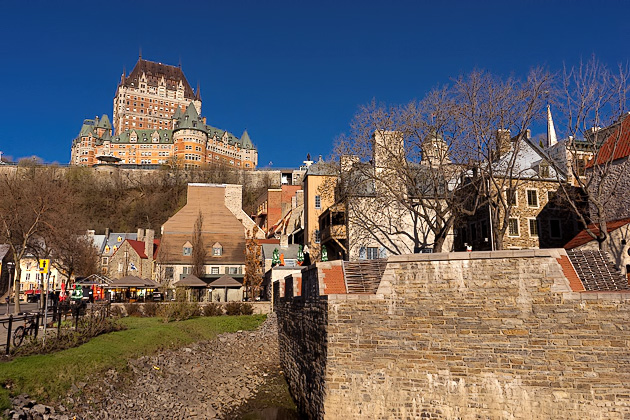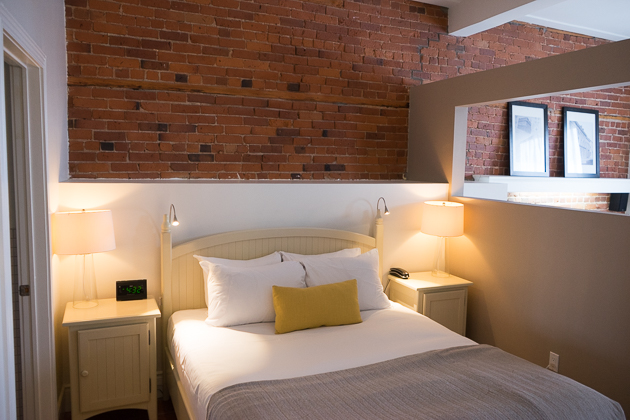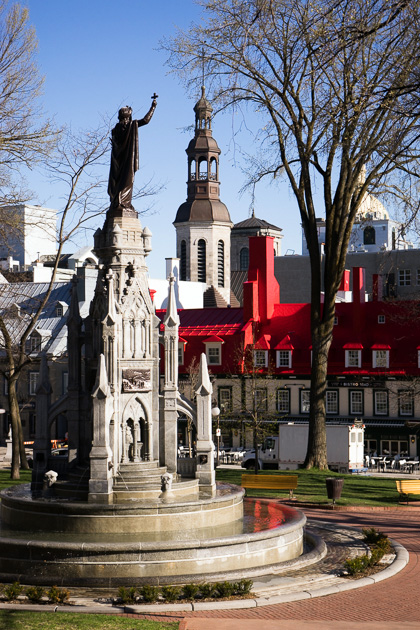A Trip to Quebec City
More from Our Three-Day Trip to Quebec City
Fortifications and Citadel | Two Views of Quebec | The Château Frontenac
Old Quebec | The Montmorency Falls | The Plains of Abraham | Two Great QC Hotels | Final Images
Montreal might be Quebec’s largest and most important city, but it’s not the capital of the province. That would be Quebec City, three hours to the north along the St. Lawrence River. The only city in Canada or the USA which has retained its original fortifications, Quebec City makes for a perfect getaway from Montreal.

The name of the city is officially “Quebec,” and this is how most natives refer to it. “City” is often appended to the name to help differentiate it from the province, but for locals, it’s just “Quebec.” At first, it confused us when people in Montreal would ask if we’d be “going to Quebec.” Weren’t we already there?
Quebec City was “discovered” by French explorer Jacques Cartier, who built a fort on the site in 1535 during his second voyage to the New World. But it wasn’t until 1608 that Samuel de Champlain founded a permanent settlement here. The town would grow slowly, and although it never experienced the kind of population boom that hit Montreal, it’s remained an administrative capital since its inception.
The British claimed Quebec in 1763, at the end of the Seven Years War, but the city’s heart has remained steadfastly French. In comparison with Montreal, where a significant proportion of the population speaks English, 95% of Quebec City’s population is francophone. And there are far fewer ethnic minorities here; in fact, this is the least diverse major city in all of Canada. Immigrants and industry were drawn to the booming port city of Montreal, and as a result, Quebec City has maintained a small-town feel, despite a healthy population of 700,000.
Quebec City is located where the St. Lawrence River begins to widen, on its approach the Atlantic Ocean. With Cape Diamond, its large natural promontory overlooking the river, the location is of utmost strategic importance, and was a natural spot for Champlain’s settlement. Most of the city’s historic sights are found in the walled confines of Old Quebec, which has both a “High Town” atop the promontory, and a narrow “Low Town” squished between Cape Diamond and the river.
Old Quebec doesn’t seem to have changed much in its 400 years of existence. We arrived on the morning bus from Montreal and, by the end of the ten-minute walk to our hotel, Le St-Pierre Auberge we’d already fallen in love. With its ramparts, gates, stone buildings, cobblestone streets and European architecture, Quebec City is beyond picturesque. And the locals know it. One lady we encountered during our initial explorations told us that Quebec is “la plus belle ville d’Amérique du Nord.” We found it hard to disagree.




Haha, people are indeed often confused by the whole “Quebec” as a province and “Quebec” as a city. 😛 I hope you loved your trip!